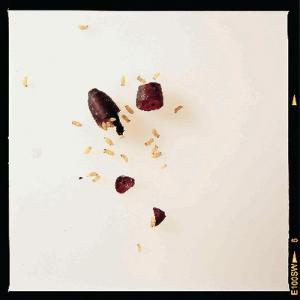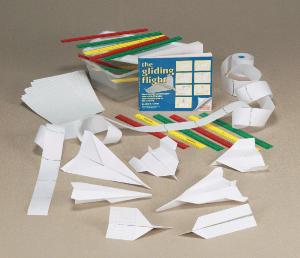Discovering the scientific method; Plus a free student handout from AccessScience
Students can think like a scientist by using the scientific method.
Access to this content is available to Ward's World readers for free from McGraw Hill's AccessScience, an award-winning, digital STEM resource containing exclusive articles written by expert scientists and engineers; biographies of well-known scientific figures; science news, videos, and animations; and much, much more.
Instructors can use AccessScience to guide students on their research project journeys, to help students understand scientific concepts, to support distance learning efforts, in flipped classroom approaches, and in countless other ways.
Ward’s World and AccessScience have partnered to offer educators a no-obligation, free trial subscription to AccessScience. Request your free trial today to discover how valuable AccessScience can be for you and your students! Get your free trial now.
All Grades
The scientific method is an organized process to answer questions and solve problems. Researchers use a step-by-step approach to conduct experiments and draw conclusions. Students in your class can think like a scientist by using the scientific method.
In its most basic form, the scientific method involves
- Stating a problem or question
- Forming a hypothesis
- Identifying the variables to test your hypothesis
- Collecting and interpreting your data; drawing conclusions
The final step is to communicate or publish the findings.
While chance and accidental discoveries play a role in science, Louis Pasteur said, "In the field of observation, chance favors only the prepared mind." So, even the most significant discoveries made by chance are followed by further investigation using a scientific method.
Using the scientific method also gives students a chance to use their laboratory notebooks. They can capture their observations, questions, explanations in the notebook to help others follow their experiments step-by-step. Reproducibility is essential in science, so an accurate lab notebook makes the perfect roadmap.
What’s the difference between science, nonscience, and pseudoscience?
The scientific methodology is one factor that helps establish the critical standards of science. Sciences and nonsciences are two legitimate areas of knowledge. On the other hand, pseudoscience is a confusion of these two areas.
Science - The pursuit and application of knowledge and understanding of the natural and social world following a systematic methodology based on evidence.1
Nonscience - Approaches such as philosophy, theology, and art that tackle the ‘why’ of our existence, our interactions with one another, or defined morality/ethics. A common thread unifying non-scientific theories of the world is they rely on unseen (i.e., unmeasurable by any known instrumentation) forces to form their explanations.2 There aren’t objective means to quantify or qualify these unknown variables. There can’t be an independent test of their validity, and there is also no consistency of experience among practitioners. That would make it kind of hard to use the scientific method as a basis for observation or development of a theory!
Pseudoscience - A subset of nonscience that is false and may be portrayed and advertised as legitimate science by its followers and supporters. Pseudoscientific claims have been disproved scientifically, can't be tested scientifically, are not peer-reviewed, or lack evidence to support them. Good examples of pseudoscience include astrology, flat earth theory, ESP, and numerology. Even most ducks consider it a bunch of quackery.
Confirmation bias, searching for evidence that confirms our hypotheses, and ignoring anything that conflicts with them, most clearly distinguishes pseudoscience from genuine science that puts each hypothesis to rigorous criticism and testing.
While not all nonscience is pseudoscience, all pseudoscience is nonscience.
Download McGraw Hill’s AccessScience article, Scientific Methods, to help your students explore methods used by scientists to test their hypotheses and draw new conclusions about our world. Use this comprehensive article on experimental methods to support your lesson plans.
The free download also includes assessment questions and answers you can use to test student understanding. Download McGraw Hill's AccessScience Teacher Answer Key.
References: 1. The Science Council 2. Science and Nonscience | Issue 96 | Philosophy Now
Recommended Products:
[StartProductBlock]
Ward's® Scientific Method Poster
Highlights each step of the Scientific Method to reinforce how scientists perform controlled experiments.
[EndProductBlock]
[StartProductBlock]

Ward's® Using Nasonia to Teach the Scientific Method Lab Activity
Inquiry-based learning activity on the relationship between Nasonia, Sarcophaga, and parasitism. Students observe, note the behaviors, hypothesize and design an experiment to test their hypothesis.
[EndProductBlock]
[StartProductBlock]

Paper Planes and The Scientific Method Kit
Students build two different gliders and conduct a series of experiments that use the scientific method to compare the performance of these gliders. Integrate science, language arts, and math.
[EndProductBlock]
[StartProductBlock]
General Science Student Lab Notebook
Permanently side bound, with a wrap-around back cover. Duplicate carbonless sets allow the teacher to have a copy of completed work. Contains a periodic table, quick-reference information, and safety guidelines.
[EndProductBlock]
